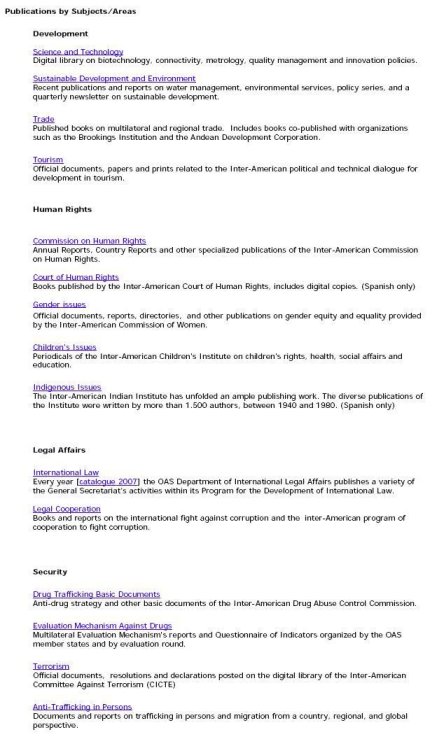Discovering History - The Helsinki Final Act
Page 2
Basket 2
Co-operation in the fields of economics, of science and
technology,
and of the environment
This basket of cooperation has many target areas mostly dealing with commercial interests. Specifically included: commercial exchanges, industrial co-operation and projects of common interest, trade, harmonization of standards, international law and arbitration, bilateral agreements, cooperation in science and technology including forms and methods, the environment, transportation for international trade, promotion of international tourism, "economic and social aspects of migrant labor", security and cooperation in the Mediterranean.
What this basket is really about is a power shift to an international ruling class in Europe, regional governance, demotion of nations to "states" (colonies), central planning for social, cultural and economic issues and a global redistribution of wealth.
"Recognizing that such cooperation, with due regard for the different levels of economic development, can be developed, on the basis of equality and mutual satisfaction of the partners, and of reciprocity permitting, as a whole, an equitable distribution of advantages and obligations of comparable scale, with respect for bilateral and multilateral agreements....giving special attention to the least developed countries.Convinced that growing world-wide economic interdependence calls for increasing common and effective efforts towards the solution of major world economic problems such as food, energy, commodities, monetary and financial problems, and therefore emphasizes the need for promoting stable and equitable international economic relations, thus contributing to the continuous and diversified economic development of all countries.
In the name of "cooperation" international collectives have spawned like a cancer metastasizes.
World Economic Forum is one of the international cancers that meets to discuss world economic problems (quite a joke... the rich gather to together at a fabulous, exclusive resort to talk about the misery of ordinary people). Notice that the map outlines are regions - with the outline for the U.S. including both Mexico and Canada.
The commercial provisions when taken together, reorient the function of government to be the pimps for big business and the sales agent for the markets of smaller domestic businesses.
The resolution includes promoting 'free trade' on the basis of all modalities for goods and services (Services = people and jobs). They will progressively remove or reduce obstacles to the development of trade (See NAFTA Chapter 11).
The states (notice the use of the term state instead of country) facilitate the expansion of contacts between representatives of official bodies, organizations, enterprises, firms and banks concerned with foreign trade, in particular, between sellers and users of products and services for the purpose of studying commercial possibilities, concluding contracts and ensuring their implementation and providing after-sales services. They agree to encourage organizations, enterprises and firms concerned with foreign trade to take measures to accelerate the conduct of business negotiations.
"Conscious of the growing role of economic and commercial information in the development of international trade..."
Standardization and Harmonization
"Considering that the value of statistical information on the international level depends to a considerable extent on the possibility of its comparability, will promote publication and dissemination of economic and commercial information... statistics concerning production, national income, budget, consumption and productivity" which is dependent upon "comparable classification, breakdown by product with indication of volume and value, country of origination or destination, publication of laws and regulations for foreign trade...."will in addition to the above encourage the development of the exchange of economic and commercial information where appropriate, joint commissions for economic, scientific and technical cooperation, national and joint chambers of commerce, and other suitable bodies; will support a study in the framework of the United Nations Economic Commission for Europe, of the possibilities of creating a multilateral system of notification of laws and regulations concerning foreign trade and changes therein; will encourage international work on the harmonization of statistical nomenclatures notably in the United Nations Economic Commission for Europe. (pg. 17)
We find the evidence of the implementation of this portion of the basket at the Ronald Reagan Building and International Trade Center, 1300 Pennsylvania Avenue, Washington DC
Ronald Reagan Building - Government Offices (Who's government?)
Commercial Law Development Center
International Trade Administration - U.S. Department of Commerce
U.S. Customs and Border Patrol
USAID
And Private and International 'Partners' and Institutions
U.S.-Mexico Chamber of Commerce
Organization of American States
The subject area categories of the Organization of American States correspond too closely to the Helsinki basket items for it to be a coincidence. And then we look at the 'Free Trade of the Americas' website and the Summits of the Americas agendas, the correspondence is undeniable.
OAS Publications by Subject
Helsinki Final Act - Basket 2
This basket of cooperation has many target areas including:
1. Commercial Exchanges
General Provisions
Business contacts and facilities
Economic and Commercial Information
Marketing
2. Industrial co-operation and projects of common interest
3. Provisions concerning trade and industrial co-operationIndustrial co-operation
Projects of common interest
Harmonization of standards
Arbitration
Specific bilateral arrangements
4. Science and technology
Possibilities for improving co-operation
Fields of co-operation (p24)
Forms and methods of co-operation p25
5. Environment
6. Co-operation in other areas
Development of Transport
Promotion of Tourism
Economic and social aspects of migrant labour
Training of personnel
7. Questions relating to Security and Co-operation
in the Mediterranean
xxxxxxxxxxxxxxxxxxxxxxxxxxxxxxxxxxx
In 1974, Willy Brandt was forced to resign from the CSCE when it was discovered that one of his senior cabinet officials was an East German spy but he continued on with the Helsinki agenda by becoming Chairman of the Independent Commission for International Development:
"Independent Commission for International Development issues, he oversaw the publication of a report in 1980 that came to be known as the Brandt report and which advocated development in the Third World. In 1989, Brandt strongly supported German reunification."
The Brandt report was called the 'North-South, A Programme for Survival '. It appears to be the game plan for implementation of Basket 2 agenda items.
Page 26 of the Helsinki Final Act:
recommend that, in developing co-operation in the field of science and technology, full use be made of existing practices of bilateral and multilateral cooperation, including that of a regional or sub-regional character, together with the forms and methods of co-operation described in this document;
In 1983, Ronald Reagan signed the La Paz Agreement that created an international border region with Mexico. The region has a separate governing mandate. It created divided loyalties in domestic U.S. government departments by creating divisions dedicated to international affairs. The La Paz Agreement falls under the category of 'projects of common interest' and it fulfils many other provisions in the Helsinki Final Act as well. The La Paz Agreement was the first step towards erasing our borders with Mexico - creating an independent regional governing structure with language allowing expansion of territory and authorities.
AGREEMENT BETWEEN THE UNITED STATES OF AMERICA AND THE UNITED MEXICAN STATES ON COOPERATION FOR THE PROTECTION AND IMPROVEMENT OF THE ENVIRONMENT IN THE BORDER AREA
The United
States of America and the United Mexican States, RECOGNIZING
the importance of a healthful environment to the long-term
economic and social well-being of present and future
generations of each country as well as of the global
community;
RECALLING that the Declaration of the United Nations Conference on the Human Environment, proclaimed in Stockholm in 1972, called upon nations to collaborate to resolve environmental problems of common concern; NOTING previous agreements and programs providing for environmental cooperation between the two countries; BELIEVING that such cooperation is of mutual benefit in coping with similar environmental problems in each country; ACKNOWLEDGING the important work of the International Boundary and Water Commission and the contribution of the agreements concluded between the two countries relating to environmental affairs; REAFFIRMING their political will to further strengthen and demonstrate the importance attached by both Governments to cooperation on environmental protection and in furtherance of the principle of good neighborliness; Have agreed as follows:
The purpose of the La Paz Agreement was ostensibly to work
cooperatively with Mexico to clean up the environment in the
border region. The key is in the definition of the
word 'environment'.
“Environment is defined comprehensively to include all relationships between humans and all that impact upon them, and all that they impact”1.
[1] Mohua Guha and Aparajita Chattopadhyay, “Environmental education: A pathway for sustainable development”, (Caldwell, L K 1993) p. 2 http://iipsenvis.nic.in/nlv2n4d05/envi_edu.pdf
Vicky
Davis
March 5, 2008
Updated April 9, 2008



